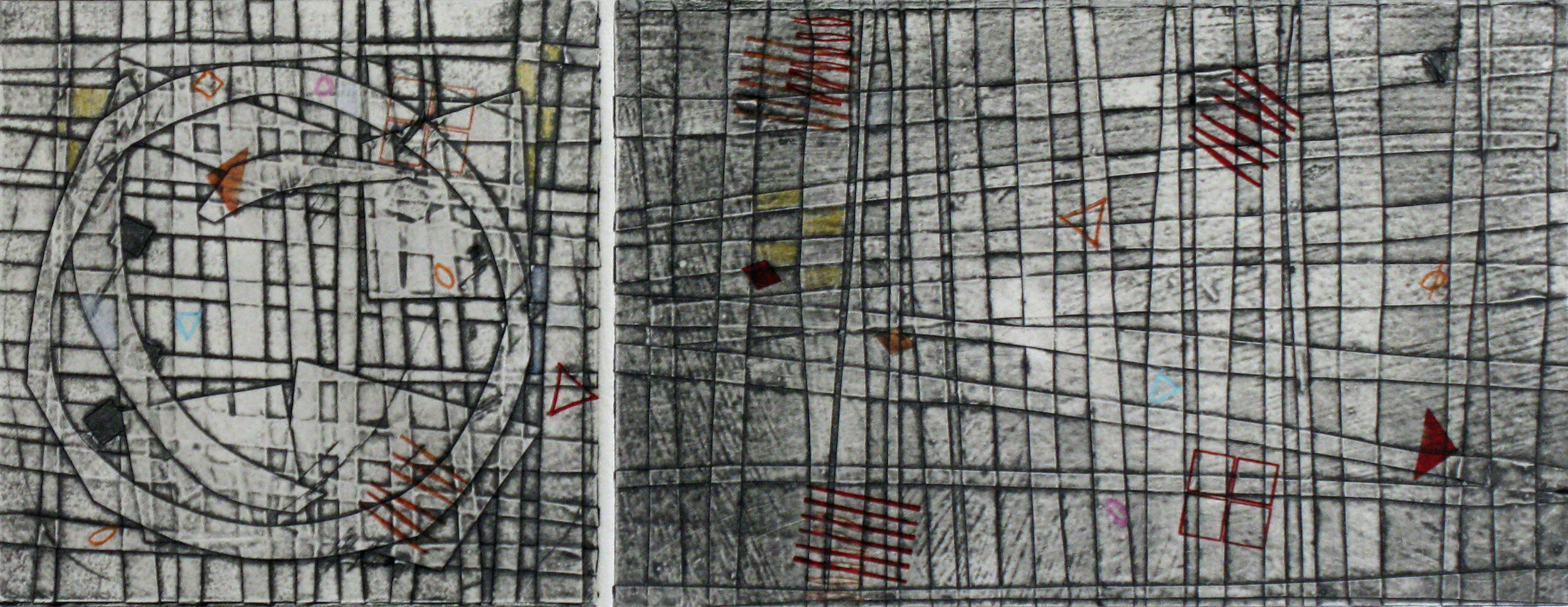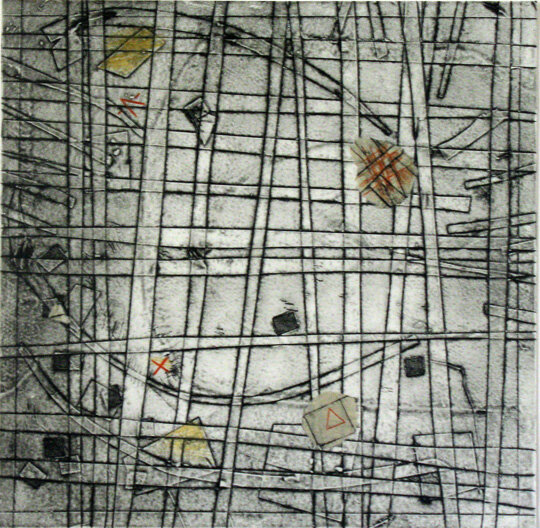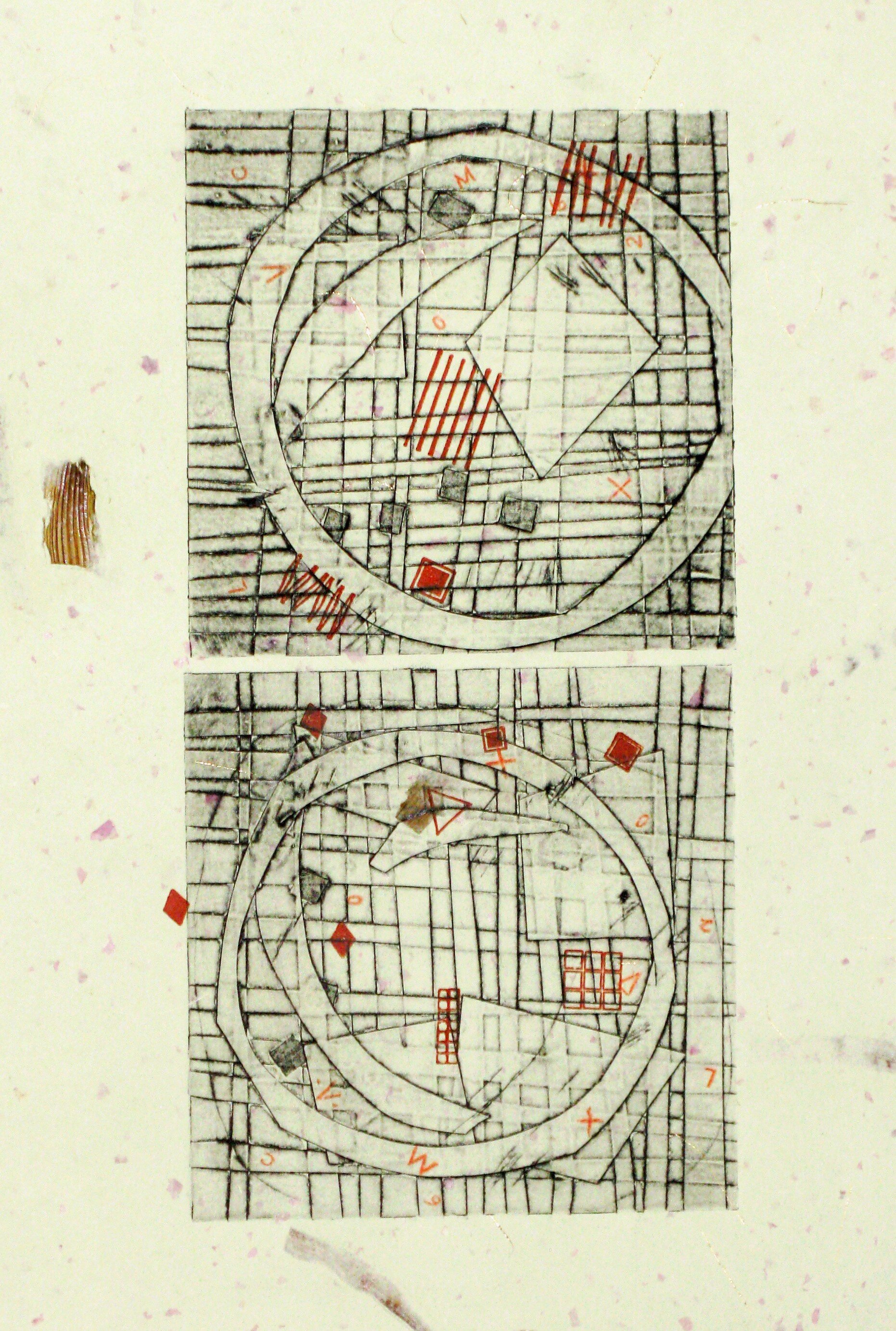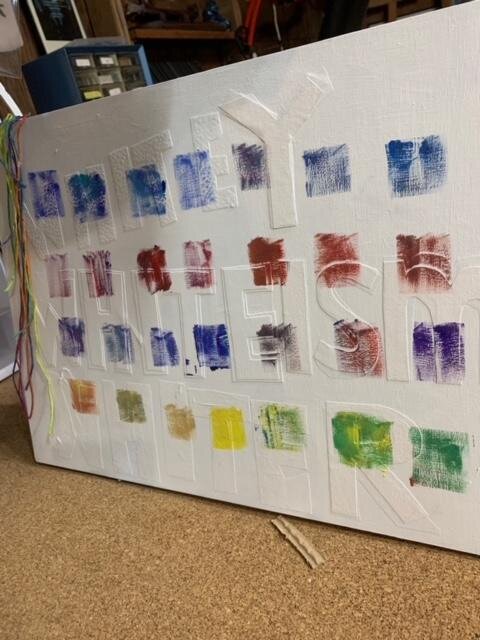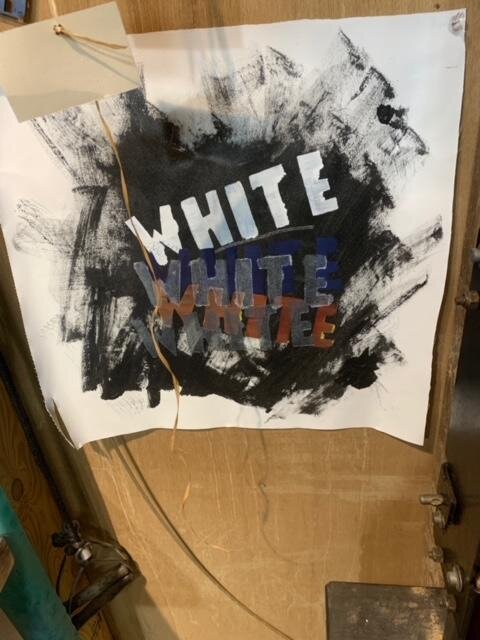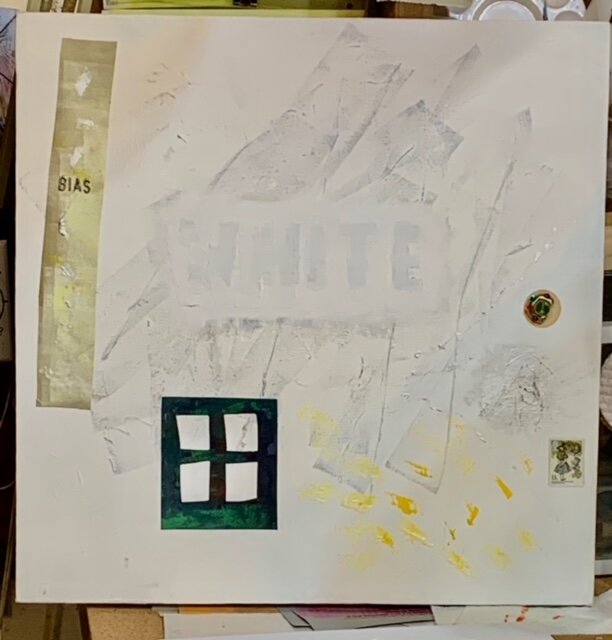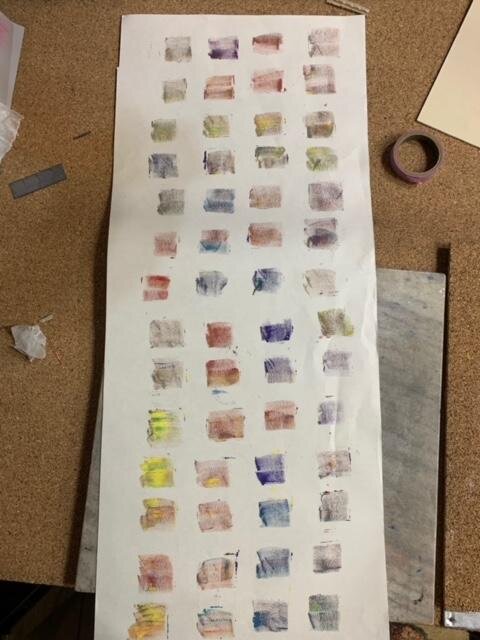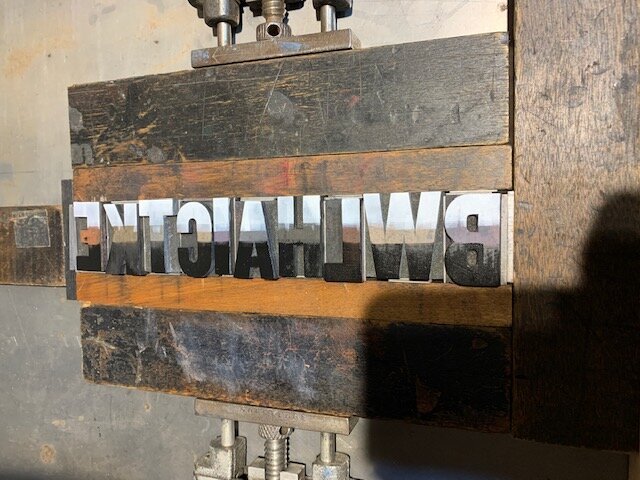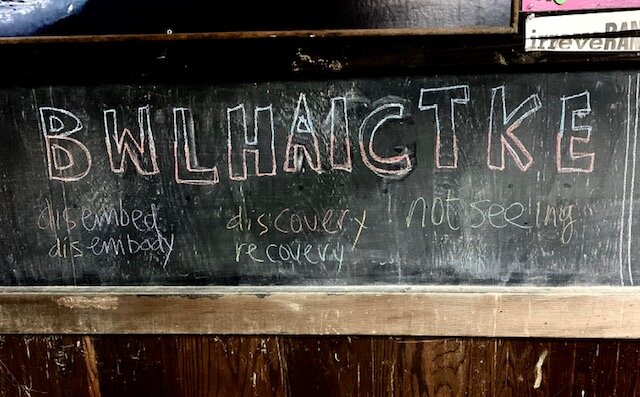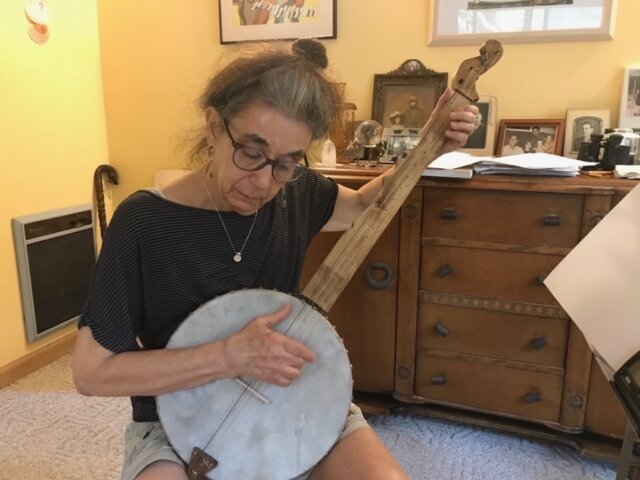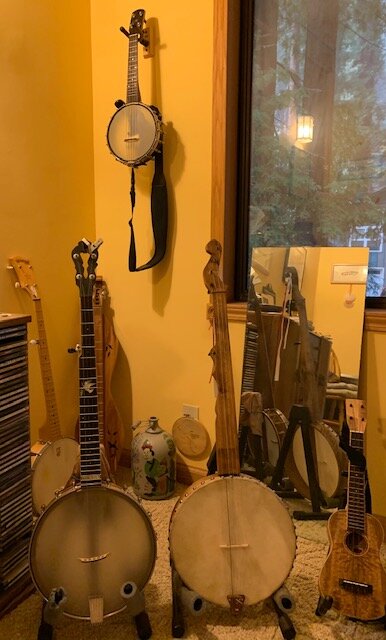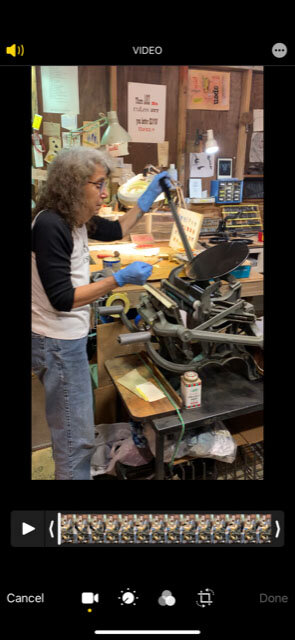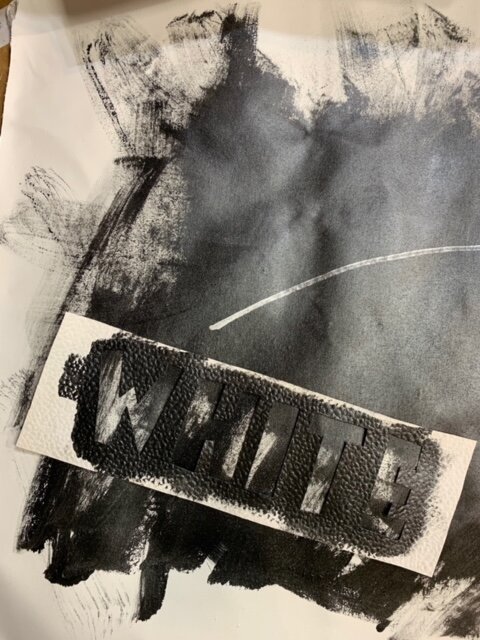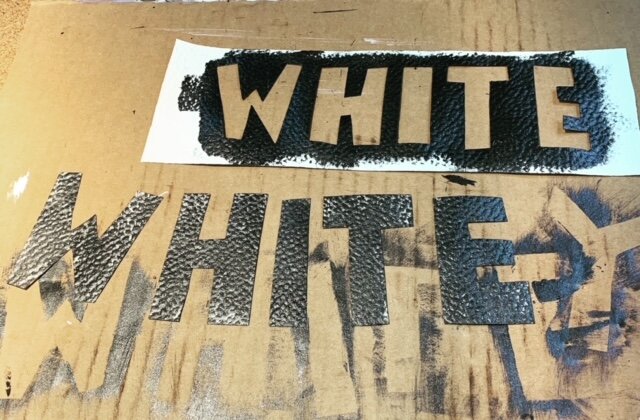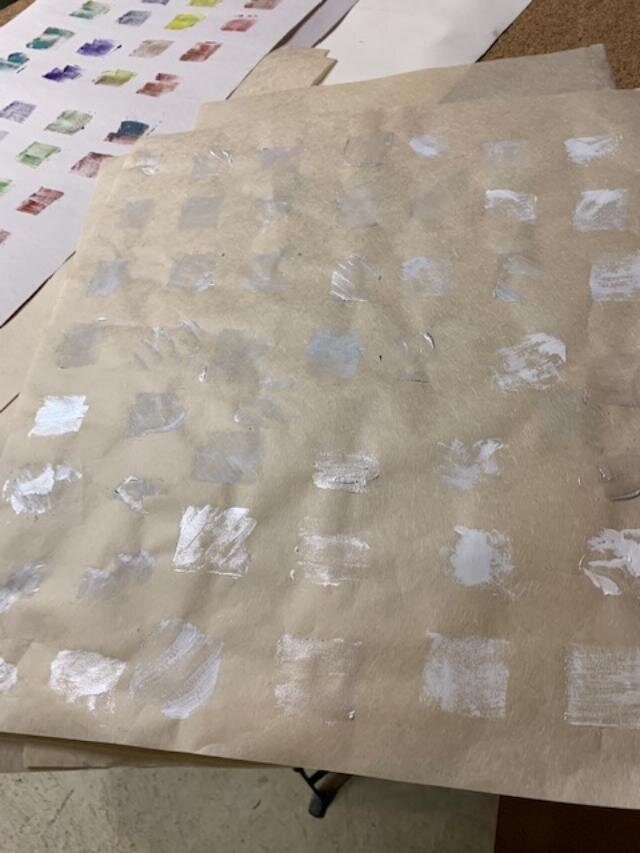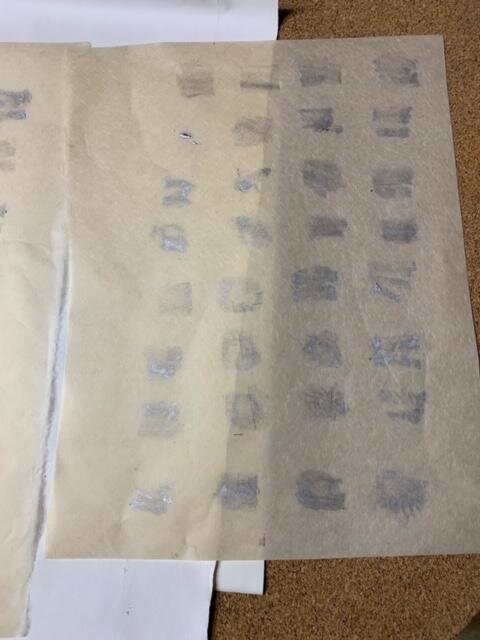A Conversation Between Two Printers: The NBLA and its Studio Printers remained active and in contact through the pandemic year even when the shop at times had to close. We held monthly Zoom meetings, and to keep those interesting and keep us connected some of us worked on presentations for the group.
Below is the transcript of an interesting conversation between two of our wonderfully creative and longtime Studio Printers Jami Taback and Judi Goldberg
See images below.
JAMI
Because of and due to the quarantine most of us experienced a profound loss of friendship, connections and conversation. The dueling of ideas, the sharing of and working around each other is what we missed the most. Early on Brooke Holve had an idea to counter this by asking us to pair up with each other and continue to create those conversations we so missed.
Doing this in our homes brought out a different kind of conversation which delved deeper into our psyche.
JUDI
It’s not a new conversation, the way letterpress changed our work. My work. My way of working. Of writing. Of translating my writing, my formulation of words, to a page. My way of looking at a page. My way of looking at a blank piece of paper and the forms put on it.
We have been having that conversation at The (North Bay Letterpress Arts) Shop, the shared studio space, for as long as I’ve been there. But this time, I had different answers to a broader question:
The way tools, the tools we use, inform the work we do, the way form and content are part and parcel. Answers informed this time, in late fall, 2020, by the many factors large and small, which overlay, and so changed the question, and the way we had the conversation. And the way we would share it.
We weren’t at the shop. We weren’t in person. We weren’t overlapping. We weren’t seeing just the other faces. Our own faces were part of the conversation. On camera.
And we were in two places at once. At my house in the music room, and hers, in her studio.
We were face to face, with ourselves as well. There were no looming letterpresses. No ambient smell of ink (in the morning) no shared pot of coffee brewing.
And prepared to talk about our printing, Jami instead asked about the music stand behind me. What’s on the music stand she wanted to know.
Never once had a music stand entered into the conversation about ways in which letterpress has changed my work. Never has music entered into a conversation about my work.
And I began talking about the way my newly acquired minstrel banjo, (a replica of a very old instrument) with its integral imperfection demanded a relentless honesty rather than a pursuit of something musically perfect. And talking about the ways playing that particular instrument had begun to change my music, the way I approached my music playing.
And now the conversation was more generally about the ways in which the tools at hand, with their constraint and each their own learning curve, show up, make new demands in the work we do. In the work I do.
And though our talk was billed as a conversation, and we had many between us, to talk about what we were talking about, in the end, much like artists working side by side in a common studio space, we each retreated to our station, to our own easel, to our own press, to our own instruments to answer the question. And came back together to report on, to show and tell, some of the insights we came to working within the confines of our own covidly distant and contrived work spaces.
What follows is a distillation of the conversations Jami and I had. (Including photos we presented when we did this in person at the Studio Printers (resident printers of North Bay Letterpress Arts) monthly zoom meeting.
JAMI
You know what struck me first when judi and I had our first encounter was that judi wasn’t in her studio with a press behind her but rather a music stand and her banjo were in view prompting me to ask my first question which was ‘what’s on your music stand?’ judi proceeded to take out this magnificent new Banjo and strum it for me taking me out of my current space and shifting me over and into her world which she told me was about words, music and lyrics. I often think of judi’s work as lyrical and wonder when the written words, music do and the images you create become lyrical and is this something you are conscious of or does it just occur naturally? When do these 3 elements collide and become one fully investigated idea?
Judi, please equate the fretless banjo to the way you think-is it more dangerous or open without rules sort of thing that attracts you to this instrument.
JUDI
HA! it’s all potentially dangerous! I think risk is inherent in art.
This newest banjo is a replica of an old instrument, it is fundamentally fundamental. fundamentally not fancy, and so it demands a fundamental honesty because that’s all there is. There’s no cover.
My art unfolds in the moment and in the doing, from everything around me paperclips or cats or tea rain wind fire sickness health politics love sex random or directed thoughts and feelings and sounds and words tones and colors shapes
and it all collides and flies apart in the space between the freedoms and constraints of the moment
and the medium and the tools
And like using the presses taught me things take the time they take this not fancy minstrel banjo taught me, demanded that I begin to simply listen, and to hear, to hear its sounds rather than some elusive perfect pitch, and what happened was a willingness to be in conversation with the instrument and its music and the music being played; it’s reminded me of the freedom inherent imperfection. It’s offered me the sounds between the frets.
I’m the adult child of a professional musician and writer, and once wife to a visual artist who left his mfa program saying the hassle wasn’t worth the bummer
it’s also about perspective and how I approach something
is it a conversation or a speech
is it practicing or playing
improv or transcription
is it composing or editing
am I a writer or writing
a printer or someone who prints
and having vocabulary for it all and how much I love using my hands...
and how it is all such grand theater and how problem solving is its own creative endeavor
and if I end up with an artifact an archive of the exploration so much the better
so, Jami, you’ve been an artist and a printer for a long time, but found your way to letterpress recently; what didn’t you know about yourself as an artist and a printer and your art before you started using letterpress and particularly at North Bay Letterpress Arts?
JAMI
Letters seemed more decorative to me and it took a while for me to see that they were the key to our language and put them together into words. I think I was introduced to the world of imagery first, being I grew up in a family of artists and pictures seemed to be important to all of them. My experiences in the museums were looking at art with no information next to it and in time more and more information was next to the paintings until too much was described. With all of this I came to the conclusion that often letters and words should integrate within a work of art. When I met judi and Eric almost 7 years ago-something clicked. It was not an easy jump for me and it took a few years to get to where the words and letters were more like symbols and I reverted back to my original feelings about letters as if I was a little child again getting a second chance at exploring letters as a decorative element.
Letterpress at first began to put order into my words and images but in short time I realized this approach was not for me. I was trying to get my work to fit into a category which diluted my original ideas and forced me to alter it to conform. So I sort of went on a learning adventure to see how letterpress could fit into my ethos, rather than my trying to fit into it.
This realization liberated me to think and construct in my own way. I ceased trying to find words and once again by visiting my childhood I began to look at the individual letters as decorative-from there I was off and running. I am a symbolist and dada creator. I am dancing in my work and flitting and jumping and it is all very physical to me rather than static.
I like to know that my work is speaking to the spectator and I am most interested in the rapport between the viewer and the art.
When we look at a work of art and see something in it, the art will respond by revealing more and the report continues until the spectator moves on.
JAMI’S WORK:
JUDI’S WORK:
